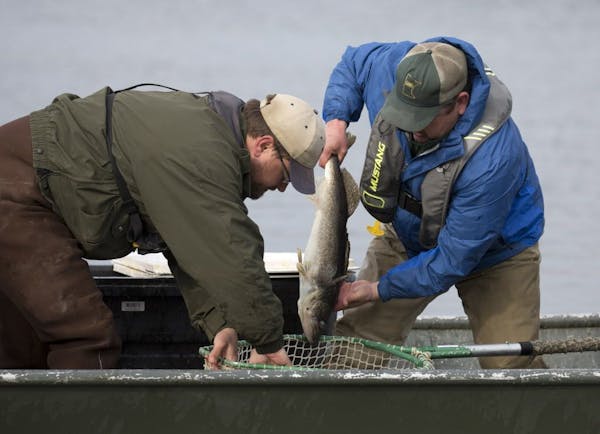History has shown that politicians who interfere with natural resource management get things wrong more often than not. Better, by far, to have professionals trained in wildlife and fishery sciences, and related fields, to decide whether a species should be harvested or protected. Ditto the management of relevant habitats.
Of course only the naive believe major natural resource decisions are founded in science alone. Sociology often plays a role. Also culture. And history. And heritage …
And politics.
Example: Climate change — mankind-induced or not — is a science problem requiring science-based solutions, or would-be solutions. Yet politics likely will be a deciding factor, if not the deciding factor, in its resolution, assuming there is one.
Which brings us to Gov. Mark Dayton's decision Tuesday to keep walleye fishing open on Mille Lacs, even though sport anglers exceeded the harvest quota the DNR agreed to with the eight Chippewa bands who co-manage the lake.
"Harvest" in this instance means an estimate of the number of Mille Lacs walleyes that died since the May fishing opener after being caught and released by anglers.
This hooking mortality is the only walleye harvest that has occurred this summer on the big lake, where catch-and-release walleye angling has ruled.
How complicated is Mille Lacs walleye management?
Consider: Young walleyes have disappeared in recent years en masse before reaching their second birthdays. Invasive species in the lake are plentiful, if not rampant. And fish that possibly compete (or not) with the lake's walleyes have flourished, specifically smallmouth bass and northern pike.
Exactly the type of management landscape where — in most instances — political interference is neither wanted nor warranted.
Except in this case … because Dayton got it right, for three reasons:
• All indications are that continuing catch-and-release Mille Lacs walleye fishing until the lake's management year ends Dec. 1 won't hurt the fishery. This includes the lake's vaunted 2013 walleye year class that represents the lake's future spawning stock.
• Notwithstanding the importance of the DNR's continuing assessments of the Mille Lacs walleye population and, no less essential, the agency's assessments of the lake's forage fish, Mille Lacs walleyes appear to be healthy and their numbers more plentiful across a greater size spectrum (measured by anglers' catches this summer) than the aforementioned assessments might indicate.
• Finally, as Steve Kulifaj, owner of the Red Door Resort on Mille Lacs, said Tuesday, "A fishery is only a fishery if it is comprised of people as well as fish."
Meaning, in this case, as Dayton said in an interview Tuesday, that closing walleye fishing on Mille Lacs wasn't warranted, given its perceived minimal impact on fish but possibly major impact on people.
"It was my decision," Dayton said. "And to impose [a closure on Mille Lacs business owners and others] without a compelling reason wasn't something I could justify.''
Whether the affected Chippewa bands agree — and if not, what remedy they seek — remains to be seen.
Dennis Anderson • danderson@startribune.com

